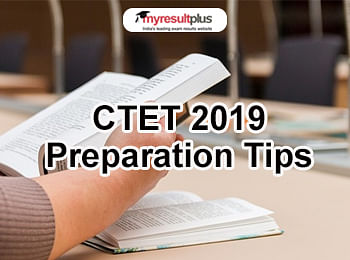
CTET
- PC : self
The Central Board Secondary Education (CBSE) CTET exam is going to be held on July 7, 2019. The aspirants have few days left for the CTET 2019 preparation. In this short period of time, candidates should start the practice of CTET questions instead of covering new topics.
Here we are providing few questions for practice. It might be helpful for the CTET aspirants. The correct answers to all the questions are also given at the end.
These questions will strengthen your preparation:
1. Which of the following are neighbouring states of Jammu and Kashmir?
(A) Uttarakhand, Rajasthan
(B) Himachal Pradesh, Uttarakhand
(C) Himachal Pradesh, Uttar Pradesh
(D) Himachal Pradesh, Punjab
2. In which year the Energy Conservation Act was launched by the Energy Efficiency Bureau in India?
(A) The year 1991
(B) The year 1999
(C) The year 2001
(D) The year 2007
3. A teacher gives a picture of different animals which do not live in our homes, to his students and asks them to colour those pictures. The purpose of the activity is...
a. Creating Creativity
b. Developing Overview
c. Developing Classification skills
d. Developing Data collection
Which option of the above is correct?
(A) a, b and d
(B) b, c and d
(C) a, c and d
(D) a, b and c
4. To assess the different thinking of children on the topic of ‘Evaporation’, which question of the below can be a sample of it?
(A) What happens if the water cycle is not in existence?
(B) Write 5 benefits of the water cycle.
(C) Draw a diagram of the water cycle with its name.
(D) Make a list of water cycle sequence, step by step.
5. The nature of the gastric juices of the human stomach is…………
This nature helps in the digestion of food.
(A) Acidic
(B) Amphoteric
(C) Neutral
(D) Basic
6. When a snake charmer plays his instrument, the snake moves his head on that sound. According to you, how snake response to the instrument?
(A) Looking at the movement of that instrument
(B) Listening to the sound of the instrument
(C) By smelling the instrument
(D) Responding to the vibrations, generated by the instrument.
7. In 2018, what was the theme of ‘World Environment Day’?
(A) Beat Air Pollution
(B) Connecting People to Nature
(C) Say No to Plastic Garbage
(D) None of the above
8. Read the details of farming below and identify this method.
Farms are left empty for a few years after cutting a crop. Nothing is grown in that land. In this land whatever is arises either Bamboo or other corps, did not uproot them. After cutting, it is burned. This ash makes the land fertile. When this land is ready for cultivation, it is dug deeply and seeds are sprinkled on it.
(A) Jhoom farming
(B) Cooperative farming
(C) Irrigation farming
(D) Stair farming
9. The family is Unit, including Mother Father and their two children. This statement is…………..
(A) Is True, because all Indian Families are of this type.
(B) Is not true, because there are many types of families and families cannot be classified in only one type.
(C) Is not true, because in the statement it should be clear that children are biological.
(D) Is true, because it is a perfect family
10. Which of the following groups’ eyesight are strong and they can see objects from long distance as compared to humans?
(A) Bee, Mosquito, Butterfly
(B) The eagle, the vulture, the eagle (Garud)
(C) Snake, silk-pest, Lizard
(D) Tiger, leopard, stallion
The answers to the questions are:
1. D
2. C
3. D
4. A
5. A
6. D
7. C
8. A
9. B
10. B
To read this story in Hindi: Click Here









